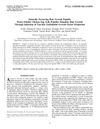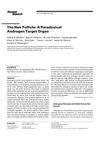Recent Advances in Hair Biology and Treatments of Androgenetic Alopecia
January 1999
in “
Journal of S C C J
”
EGF HGF PTHrP FGF5 STAT3 epidermis hair follicles hair growth cycles male hormones hair papilla cells male hormone receptors type II 5α-reductase type I 5α-reductase minoxidil PGHS-1 IGF-I finasteride transcription factors androgenetic alopecia male pattern baldness epidermis hair follicles hair growth cycles male hormones hair papilla cells male hormone receptors type II 5α-reductase type I 5α-reductase Rogaine PGHS-1 IGF-I Propecia transcription factors androgenetic alopecia male pattern baldness

TLDR Certain growth factors regulate hair growth cycles, male hormones affect hair cycles, and drugs like Minoxidil and Finasteride can stimulate hair growth and inhibit male pattern baldness respectively.
The document from 24 years ago discusses the role of growth factors such as EGF, HGF, PTHrP, and FGF5 in the regulation of hair growth cycles. It was found that the absence of the transcription factor STAT3, involved in EGF and HGF signal transmission, in the epidermis and hair follicles, prevented the transition to the second hair cycle. The target cells of male hormones, which affect human hair cycles, were identified as hair papilla cells. The expression of male hormone receptors was observed in the hair papilla cells of the beard, armpit hair, and frontal hair. The hair papilla cells of the beard and the frontal part of male pattern baldness expressed mRNA of type II 5α-reductase, while the hair papilla cells of the occipital part only expressed type I 5α-reductase and had fewer male hormone receptors. Minoxidil, which became available in Japan, is believed to stimulate hair growth by activating PGHS-1 in hair papilla cells and stimulating the secretion of IGF-I. Finasteride, a specific inhibitor of type II 5α-reductase, showed an inhibitory effect on male pattern baldness by inhibiting male hormone action. The development of drugs regulating transcription factors involved in hair cycles was anticipated.






